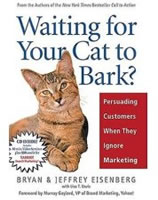I am a new fashion designer with my business partner, We want to start a design company that will focus on creatively constructed ready-wear clothing for Men & Women providing embroidery and screen printing with creative construction/ patch work/ European style, also possibly making ready-wear costume designs.we want to start this in Chicago, il area but we are currently in Michigan. We don’t know what to name it yet, My name is “Que Shebley” and his name is “Martin Andrade” we wanted to try to put our names in it in a creative way but not limited to. we will be focusing on ages from 16-40, because our designs should range from edgy dramatic to normal casual with a twist. We don’t have a large budget to work with to start but do have some nacessary machines to start and fabrics and location, we will be working from home, we were thinking of first investing in a screen printing machine so that way we can start from the simplest jobs to sell to companies and businesses in need of basic screen printing clothings for their logos and etc…..
###
Jay’s Answer: You want to start first with a business/marketing strategy.
If your demographic is 16-40 (but not exclusively), who specifically would want your designs? People in Chicago? Men? Women? Professionals? Clubbers? At what cost? Internet sales? Fashion shows? Custom or mass-market? Sizing?
Why your designs? What other companies sell products that compete with yours? No doubt, there are a lot of other startup design companies likewise targeting this age range – how will your products be different? How will you know that your designs appeal to the group you’re targeting?
How will people see your designs? In person at shows, flea markets, farmers’ markets, street corners, trunk shows, or consignment shows?
As you can see, your strategy has nothing to do with your budget/equipment. It has everything to do with identifying and finding people who want what you’re selling. If you can’t find the people easily (and they can’t find you), don’t start the business. You’ll be waiting a long time until you get the sales you’re looking for.
The narrower your demographic, the easier it is to get the right message in front of your prospect. Once your strategy is clear, then you can start figuring out a marketing plan: how much money to spend (on what and when).
As far as your business name, this is one of the last things your really need to focus on. If you (or your partner) already have name recognition, then use it in the business name. Otherwise, your name should reflect your target market – what names appeal to that group? There are 2 basic naming camps: a utilitarian name (Chicago Edgy Fashion Co.) or a nonsense word (DramaEdge). Utilitarian names are easier to recognize/remember for people. Nonsense words work well if you’re willing to put in the effort to educate your prospects.
Summary: You don’t need a large budget to make a successful company, but you do need a great strategy & plan to make sure you don’t waste your money getting started.
(Disclaimer: I help small businesses create/implement their marketing strategy/plans)
